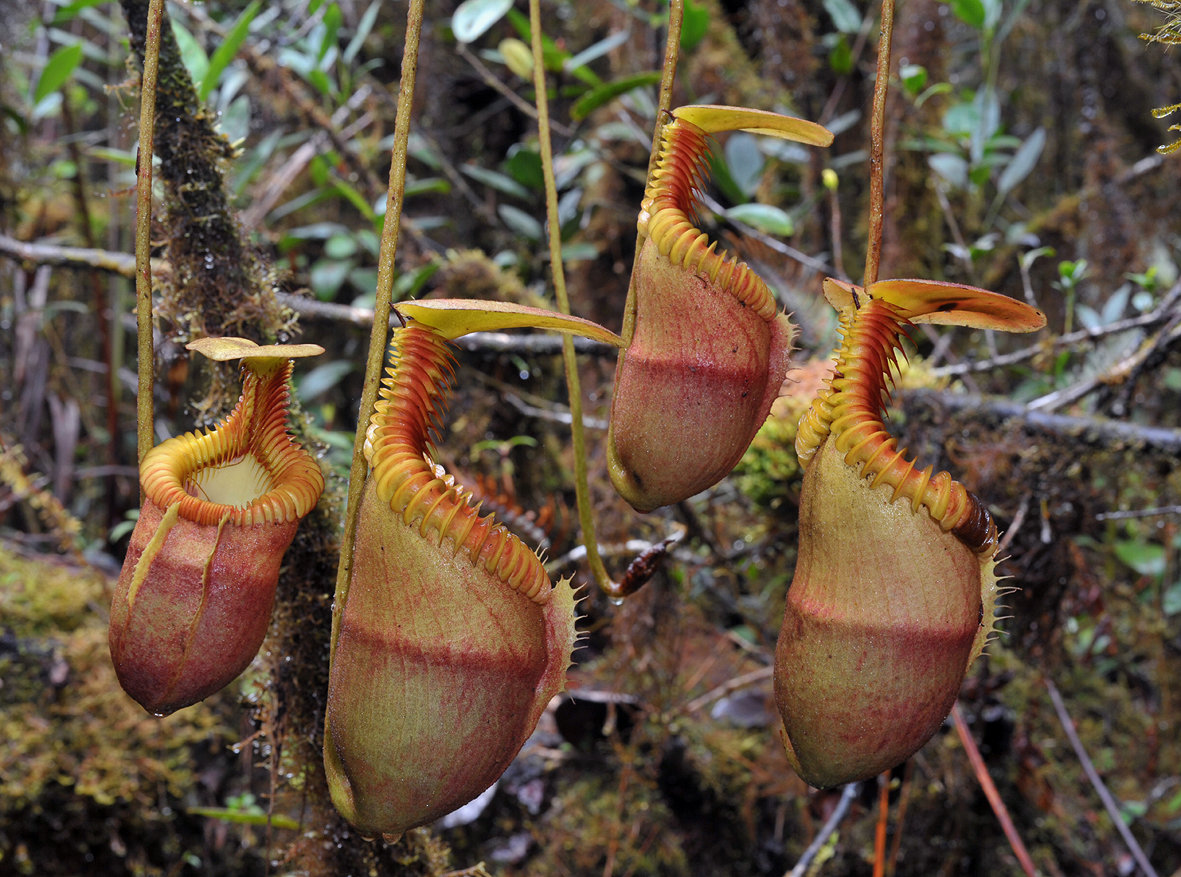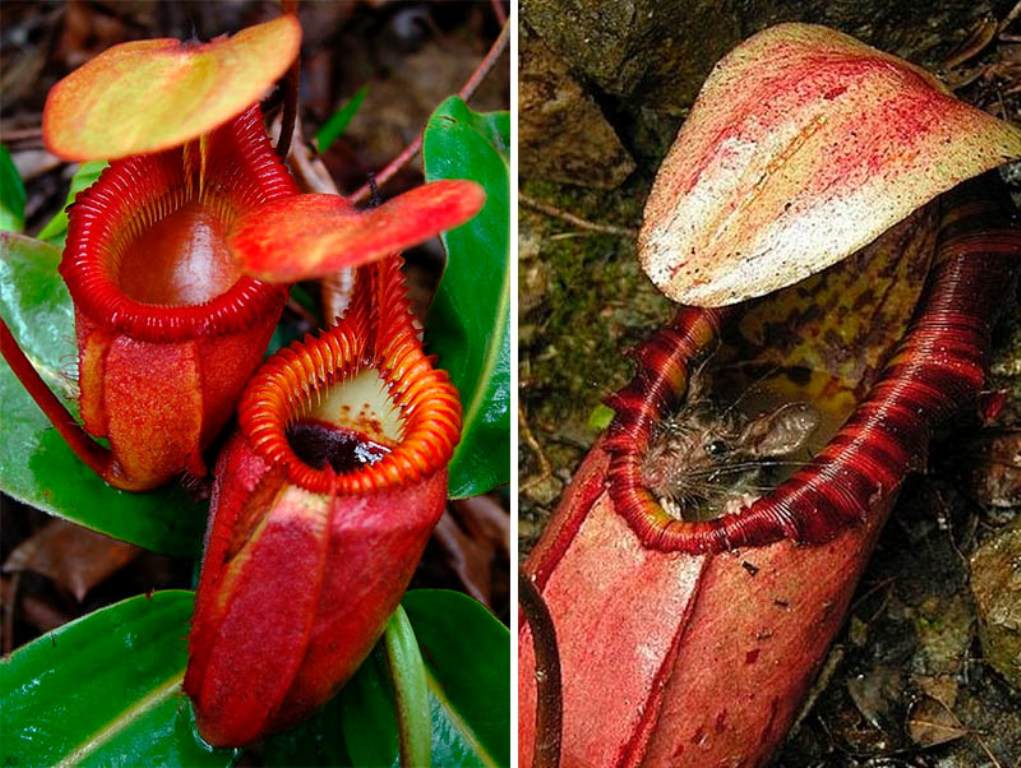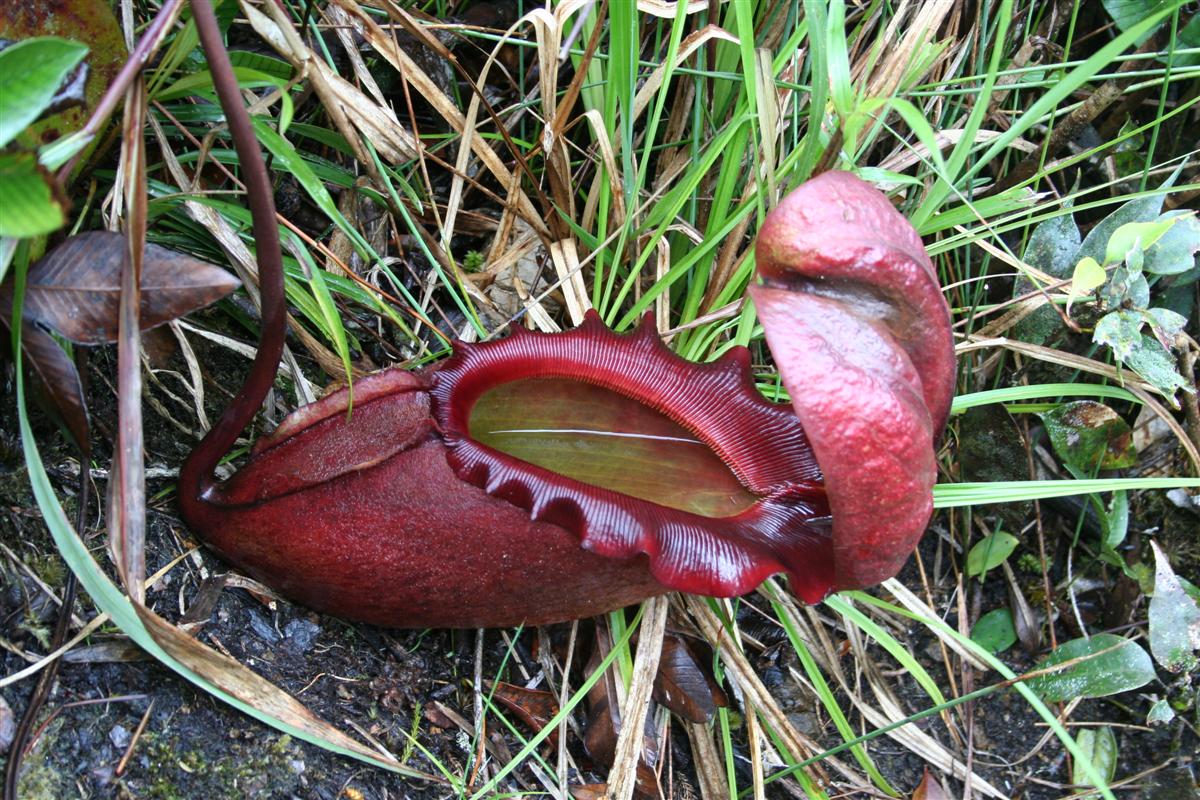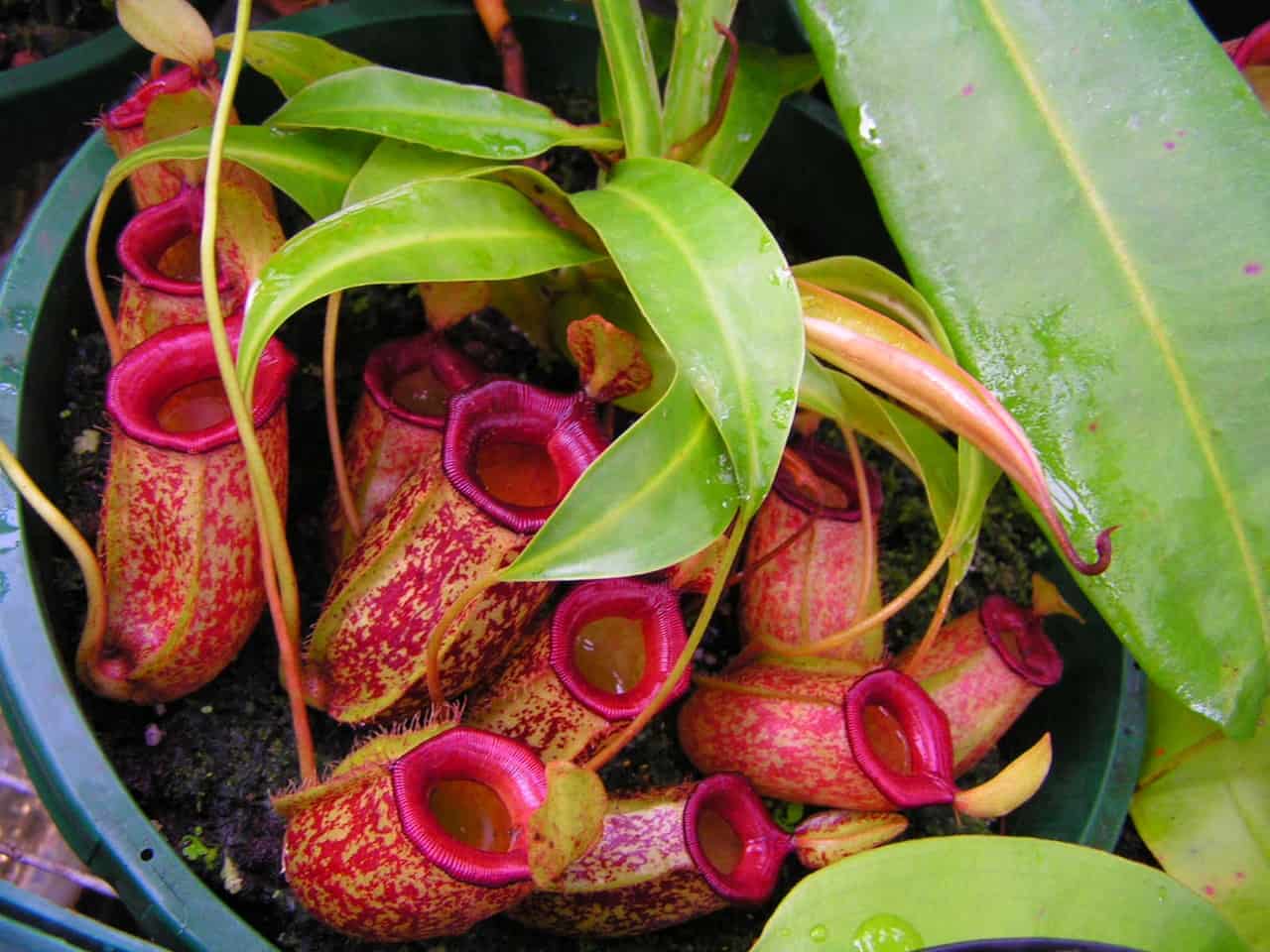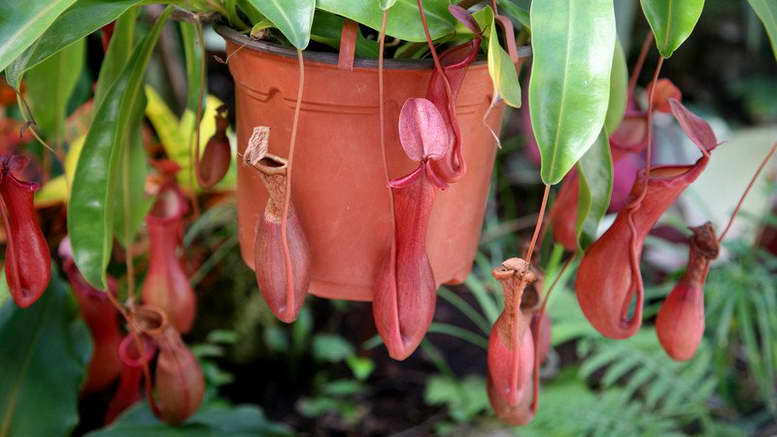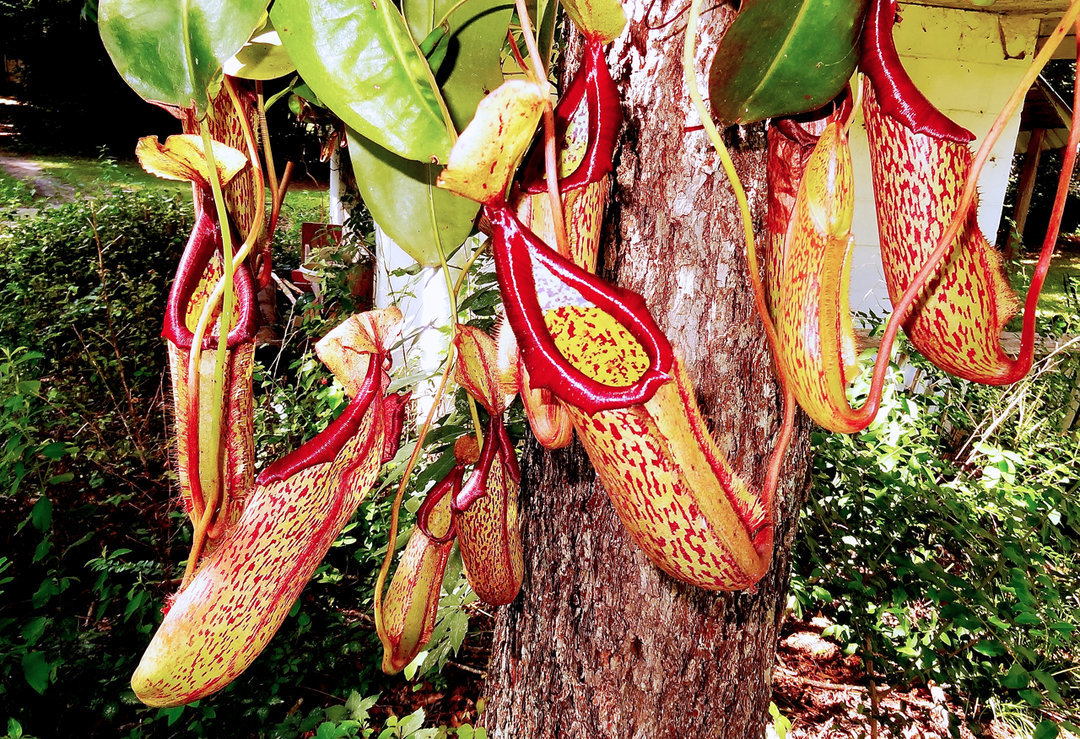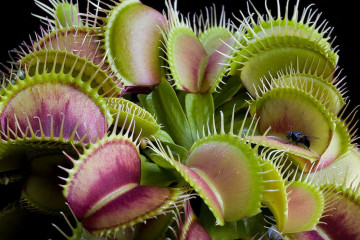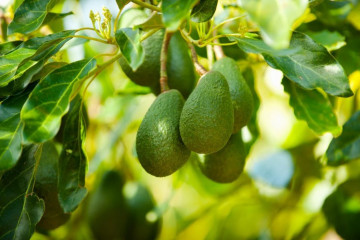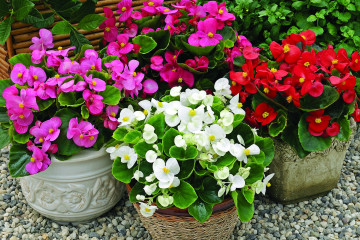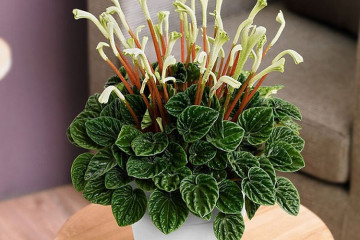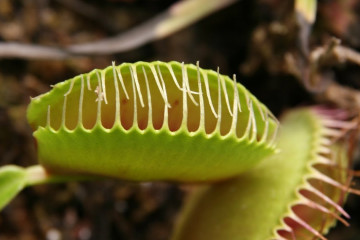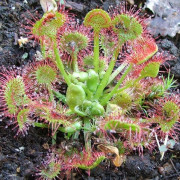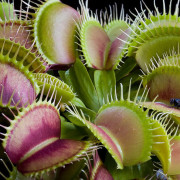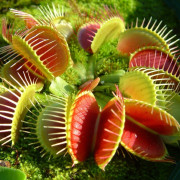Plant predator nepentes - home care
Content:
Predatory plants are still considered exotic by domestic flower growers. However, one of them is gradually beginning to win the hearts of lovers of everything unusual. This flower with the beautiful name "nepentes" is easy to care for, but regularly requires live food - insects.
For some, this causes disgust and disgust, but in most cases, an exotic flower accidentally bought will settle in the house forever. It looks beautiful and fits into any interior.
Not everyone knows what nepentes are. You can find out an amazing flower by the following description:
- Elongated, elongated leaves with thin tendrils at the ends;
- Stem height - up to 1 meter;
- Flowers with lids like small jugs;
- A thin stem that hardens over time.
Nepentes feeds on small insects. Bright traps help him to hunt small beetles and grasshoppers.
The origin of the plant
The amazing flower is considered one of the oldest plants on earth. For a long time he lives in the countries of Asia, Australia, Madagascar. Nepentes loves a humid and warm climate. Scientists claim that this plant began to feed on insects due to the fact that it lacked nutrients, growing in poor soils; in the course of evolution, the inflorescences were transformed into traps for insects.
Description of natural habitat
Some varieties of the pitcher grow in swampy areas, some in the highlands. The flower is very fond of sunlight, so some species twine around the trees in the form of vines, trying to climb as high as possible.
Main varieties
There are several varieties of exotic flowers. The most common are:
- Sanguinea;
- Alata;
- Rajah;
- Bloody Mary.
The features of keeping at home for all species are approximately the same: nepentes loves warmth, sunlight and abundant watering.
Sanguinea
If nepentes Sanguinea grows at home, home care does not take much time, this species is quite unpretentious. Sanguinea nepentes looks impressive and lives for a long time at home. The leaves are oval and light green in color.
Ventrath
This is one of the most capricious types of nepentes, which needs frequent fertilizing with mineral fertilizers. The adult plant has a thin herbaceous stem 60-70 cm high. The inflorescences are large, orange-red.
Attenborough
Nepentes Attenborough (Attenboroughii) is one of the most beautiful species. The volume of the jugs is 1.7 liters.
This predator is known to be able to digest small mice or rats. Inflorescences have a greenish tint with brownish dots.
Alata
Alata nepentes is small in size and compact in shape. At home, it grows as a vine. The homeland of this species is the Philippines. It rarely blooms, but it is distinguished by the bright color of the traps.
Rajah
Nepenthe rajah is the largest predator species. In natural conditions, it even eats lizards. Sometimes it is also called the Indian nepentes.
It is often affected by a fungus, therefore it requires regular loosening of the soil. The traps are bright yellow, slightly elongated.
Bloody Mary
This species, like the nepentes Ventrata, is quite picky about the composition of the soil. Bloody Mary Nepentes got its name for its bright burgundy traps. If it is not possible for a predator to feed on insects, it will take nutrients from the soil, as befits flowers.
Nepentes care rules
Basic care measures will help prolong the life of the plant and improve its development. Nepentes care:
- Regular watering followed by loosening;
- Top dressing with complex fertilizers;
- Transplant as needed;
- Prevention of diseases and pests.
Also, do not forget about regular feeding of animal food to the predator. Nepentes home care is a constant concern for protein feeding to maintain the vitality of a carnivorous plant.
Pests, diseases and possible problems
Nepentes pitcher often suffers from diseases and pests, so you need to take care of him very carefully. When aphids are damaged, you can only collect the pests by hand, without the use of industrial insecticides. Spraying with fungicide solutions will help with fungus. If leaves or traps begin to dry, watering should be intensified.
Watering mode
Nepentes is a plant sensitive to moisture deficiency. All types of carnivorous plant nepentes need intensive watering, especially in hot summer. The optimal frequency of watering during the warm season is twice a day, in the morning and in the evening. In winter, when the plant hibernates, watering once or twice a week is enough.
Before pouring tap water into the pot, it must be kept in the bottle for 24 hours so that the aggressive chemicals contained in the tap water precipitate. The optimum liquid temperature is room temperature.
Transfer
Reproduction and transplantation of nepentes are important aspects of flower care. The transplant is carried out infrequently, because this procedure is a great stress for the flower. The roots affected by the fungus are carefully cut off.
Soil and the right fertilizers
The pitcher plant is an insectivorous plant that needs regular feeding. For a nepentes flower, it is better to choose a slightly acidic or neutral soil. The optimal frequency of feeding in the warm season is once every three weeks. Any complex fertilizer for orchids is perfect, since nepentes is a distant "relative" of this flower.
Additionally, you can add bone meal or crushed eggshells to the soil to compensate for the calcium deficiency. Good results are obtained from the use of preparations rich in copper and iron.
Insect feeding
The real predator of the plant kingdom is nepentes. This is what makes it different from all other indoor flowers. The diet of a bloodthirsty flower is quite varied. It is most convenient to feed the predator with the following types of insects:
- Flies;
- Grasshoppers;
- Locusts;
- Mosquitoes;
- Spiders.
If you can't find anything "edible" at home, you can go to any fishing store and buy small maggot worms. They are rich in protein and appealing to nepentes. To feed a flower, you need to carefully lower the insect into its trap. This must be done at least once a month.
Some amateur growers, new to biology, put pieces of raw meat and fish in traps. In no case should this be done.The plant will digest this food, but can be seriously affected by the nutrient overload.
Such feeding is very stressful for the nepentes, as he has to spend all his energy digesting heavy, unusual food.
In order for nepentes to develop well, he regularly needs live food. If it is not possible to allocate free time for feeding the predator, it is better to have another plant at home. Without protein food, the flower will quickly wither away from a lack of nutrients. On the contrary, regular care and feeding will help to grow a real handsome man on the windowsill.

